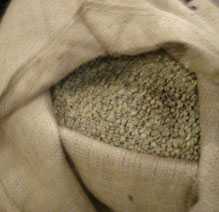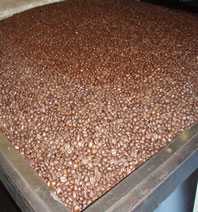FLAVORINGS-RELATED LUNG DISEASE


Coffee Processing Facilities
Workplace Interventions
Engineering Controls
Engineering controls can reduce employees’ exposures by removing the hazard from the process or by placing a barrier between the hazard and the employee. Engineering controls protect employees effectively without placing primary responsibility of implementation on the employee. Examples of engineering controls are the following:
- Using local exhaust ventilation where diacetyl and 2,3-pentanedione are produced and/or released such as roasters, grinders, hoppers or storage bins of off-gassing roasted coffee, packaging areas, flavoring, and quality control areas.
- Assessing the general ventilation system in coffee processing facilities to determine if more outdoor air needs to be introduced to the facility. Increasing air changes reduces contaminant concentrations by dilution and exhausting generated contaminants. The amount of air that needs to be introduced may change based on the season. For example, a facility that has open bay doors in the production areas during the warm months will require less introduction of outdoor air than when the bay doors are closed during the winter months.
- Ventilation systems in production areas with potential sources of alpha-diketones (e.g., roasting, grinding, flavoring, off-gassing, packaging, and quality control areas) should be under negative pressure relative to the rest of the facility. Also, air from these areas should be exhausted directly to the outdoors.
- Wherever possible, use a closed process to transfer roasted beans and/or flavorings. Closed transfer processes are the best method to reduce worker exposures to alpha-diketones.
- If small-scale weighing and handling of roasted coffee or flavorings occur, performing these tasks on benchtop workstations with slotted backdraft ventilation for the bench areas and the weighing areas.
- Ventilation changes should be made in consultation with a qualified ventilation engineer to ensure proper air flow patterns and system balancing.
- Page last reviewed: January 27, 2016
- Page last updated: January 27, 2016
- Content source:
- National Institute for Occupational Safety and Health Respiratory Health Division


 ShareCompartir
ShareCompartir